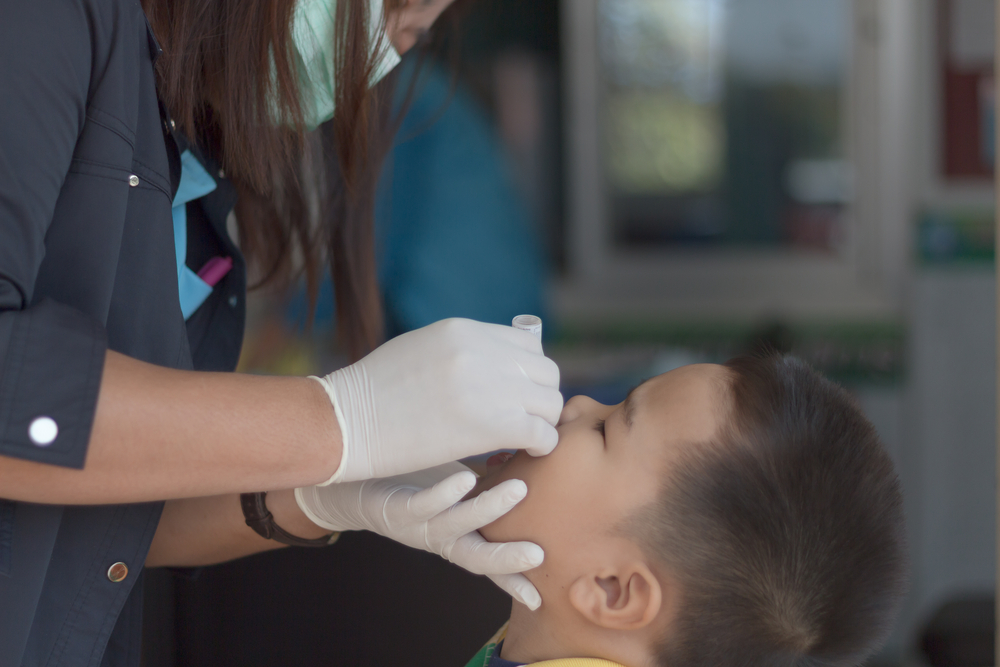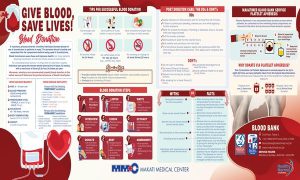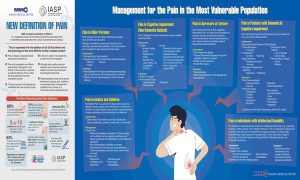The Department of Health (DOH) declared an outbreak of polio on September 19, triggering concerns of safety and spreading alarm among parents and communities.
The last case of poliovirus in the Philippines was documented in 1993, while the total eradication of the disease was declared in 2000. However, almost 20 years after polio was finally eradicated in the Philippines, authorities confirmed that new cases of the highly contagious disease have emerged in the country this year.
Re-emergence of Polio in the Philippines
The first confirmed case of polio in decades was that of a three-year-old girl in Lanao Del Sur on September 14, 2019. According to Ferchito Avelino, director of the DOH’s Bureau of Epidemiology, the poliovirus was detected in the child’s stool sample. Allegedly unvaccinated, the child has been suffering from residual paralysis.
A few days later, a second case of polio was confirmed in Laguna province. This time, a five-year-old boy who was already suffering from multiple pediatric diseases had contracted the virus. The DOH confirmed that the boy was able to walk despite suffering from bouts of paralysis and has since then been discharged from the hospital.
Additionally, DOH reported in September that several water sewage samples taken from Manila and Davao have been found to contain traces of the poliovirus. In fact, traces of type 1 poliovirus were found in Manila, while traces of type 2 poliovirus were found in Davao.
Sec. Francisco Duque III told Rappler that this was “an epidemic” in an otherwise “polio-free country.” He urged parents, health workers, caregivers and lawmakers to encourage children to partake in synchronized polio vaccinations in their respective communities.
Amid all these emerging cases of polio in the country, is there any cause for concern? In light of recent events, what does this polio outbreak mean for you and your family? In this article, we uncover the ways in which you can protect your children and your family against the polio outbreak.
What is Polio?
Polio, also known as poliomyelitis, is a highly infectious disease that attacks a person’s nervous system and causes sudden onsets of paralysis. Some of its symptoms include fatigue, fever, headache, stiff neck, floppy arms and legs, and vomiting. In extreme cases, polio can lead to permanent paralysis and even death.
How Does Polio Spread?
DOH explained that polio is primarily spread via the oral-fecal route, which means that it can be transmitted through food, water, or objects that have been contaminated with feces of someone who is infected with polio.
Global cases of polio decreased from 350,000 in 1988 to only 356 cases in 2014. Type 2 poliovirus has been declared as eradicated four years ago, with the last known case documented in India in 1999. The known cause of the few polio cases that exist in the world today is type 1 poliovirus.
Some of the main reasons why polio reemerged in the Philippines are the following: the declining number of children who get vaccinated, being unable to detect early symptoms of the disease, and substandard sanitation practices in communities.
According to DOH, children aged five years old and below are most vulnerable to polio. Likewise, anyone who has not been fully immunized against the disease is also at risk of contracting it.
If you suspect that your child might have contracted the disease, please take him or her to the department of pediatrics of the hospital nearest you. If your child did not receive vaccination against polio, please consult your pediatrician and request for vaccination.
Vaccination Campaign Against Polio
The first step in fighting against the emergence of polio is receiving one dose of the inactivated polio vaccine (IPV) intravenously. The next step is completing the polio vaccine (OPV) through oral drops.
When a child receives OPV, the weakened form of the virus found in this vaccine replicates in the intestines and develops immunity within the child by building up antibodies.
Despite the clear need for vaccination, however, data from the United Nations Children’s Fund (UNICEF) Philippines revealed that only 66 percent of children completed their oral polio vaccine administration while 45 percent completed their injection of inactivated polio vaccine in 2018. At least 95 percent of children in the country under five years old need to be vaccinated.
To combat the emergence of polio in the Philippines, the United Nation Children’s Fund (UNICEF) and WHO partnered up with the DOH in its synchronized polio vaccination campaign in Davao, Manila, and Marawi City. The goal of this massive vaccination campaign is to get 1.8 million Filipino children under 5 years of age vaccinated against polio.
Oyun Dendevnorov, a representative from UNICEF Philippines, explained that there is no other way for children to be protected against polio than getting vaccinated.
“The polio vaccine is safe and effective,” said Dendevnorov. “UNICEF is working with WHO to support DOH in meeting the country’s immunization targets.”
Aside from vaccination, WHO reminds families to practice proper hygiene, washing of hands with soap, using a toilet, eating food that is fully cooked, and drinking safe water.
Polio Vaccination Recommendations for Adults
Furthermore, DOH has advised tourists visiting the Philippines to be vaccinated in the wake of the outbreak. For those who have not yet received any polio vaccination in the last 12 months, DOH encourages to receive a single dose of IPV at least four weeks before arrival or at least by the time of departure.
Filipinos traveling abroad, meanwhile, are encouraged to find out whether the country they are visiting requires proof of polio vaccination. If so, they can get the IPV at the Bureau of Quarantine (BOQ) before departure to obtain their Certificate of Vaccination.
Vaccination with OPV and IPV is not routinely recommended for adult Filipinos because most have been vaccinated during childhood. But in case one is at increased risk of exposure and has never been vaccinated against polio, DOH recommends the following vaccination schedule of three doses of IPV:
- the first two doses given one to two months apart
- the third dose given six to 12 months after the second
For pregnant women, OPV is not recommended. But if they’re traveling to an area where polio is prevalent or if there is risk of exposure to persons suspected to have been infected, then they can receive the IPV using the recommended schedule for adults mentioned above.
Eradicate Polio Today
The discovery and formulation of the oral polio vaccine has saved millions of lives throughout the years across the world. According to WHO, at least 18 million people who would have been paralyzed by polio are now able to walk. The vaccine has also prevented the deaths of 1.5 million children.
All of these are solid evidence to support the need for vaccination. Across the Philippines, DOH, UNICEF, and WHO highly encourage families to get their children vaccinated. Both IPV and OPV have been proven to save lives. Getting vaccinated will ensure that your family is protected.









